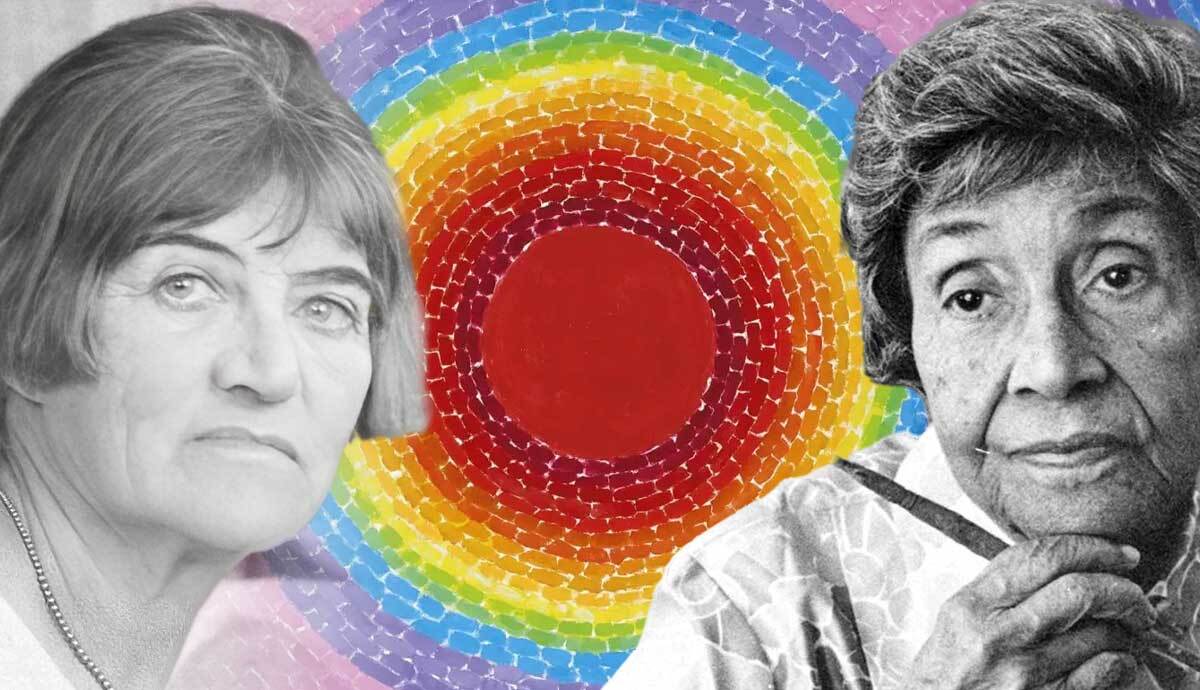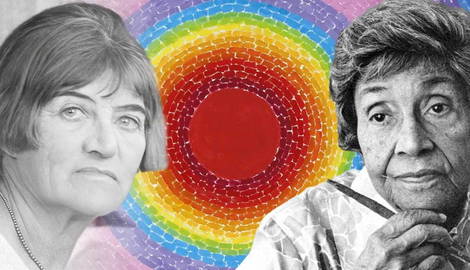
From the Renaissance to today, there have been many great female artists who pushed creative boundaries and created revolutionary artworks. They have too often been overlooked and overshadowed by their male counterparts, who received an uneven amount of notoriety for their works. Many of these women artists are just now gaining their long-deserved recognition and fame for their contributions to the creative world.
‘Why Have There Been No Great Women Artists?’

In her famous essay, Why Have There Been No Great Women Artists? (1971), author Linda Nochlin asks, “What if Picasso had been born a girl? Would Senor Ruiz have paid as much attention or stimulated as much ambition for achievement in a little Pablita?” Nochlin suggests that no, this would not have happened, explaining, “[I]n actuality, as we all know, things as they are and as they have been, in the arts as in a hundred other areas, are stultifying, oppressive, and discouraging to all those, women among them, who did not have the good fortune to be born white, preferably middle class, and above all, male.”

Only in the wake of a second feminist movement at the end of the 20th century have serious efforts begun to give the women of past centuries the attention they deserve. A glance at the art history of the past decades shows that it is by no means the case that there were no great women artists; however, they often received no attention for the greater part of their lives. Below are seven great women artists who only became known to a broad public very late in life or after death.
1. Caterina Van Hemessen (1528 – 1588)

Especially when looking at artwork from the early modern centuries, one might get the impression that there were only men who had a gift for painting. Although the most recognized and famous works from this period were by men, this was not the case. Artist Caterina van Hemessen shows that there were also great women artists in the 16th century. She was the youngest Flemish Renaissance artist and is best known for her small-format portraits of women. Some religious motifs are also known to have been from van Hemessen. These two examples from the work of the Renaissance artist, Self-Portrait (1548) and The Lamentation of Christ (1548), show that her works were in no way inferior to those of her contemporaries.
2. Artemisia Gentileschi (1593–1653)

During her lifetime, the Italian painter Artemisia Gentileschi was one of the most important Baroque painters of her time. After her death, however, the artist’s extensive and impressive oeuvre fell into oblivion for the time being. In 1916, art historian Roberto Longhi published a treatise on father and daughter Gentileschi, which contributed to her rediscovery. In the 1960s, in the wake of feminist movements, she finally attracted more attention. The feminist artist Judy Chicago dedicated one of the 39 table settings in her work The Dinner Party, a tribute to great female artists, to Artemisia Gentileschi.

From today’s perspective, it is no wonder that Artemisia Gentileschi became an artistic legend for feminists. For her time, the baroque artist lived an extraordinarily emancipated life. Not only was she the first woman to be able to study at the Florentine Academy of Fine Arts, but later she also separated from her husband and lived alone with her children. What is quite normal today, was almost impossible for women living in the 17th century. In the artist’s motifs, strong women stand out. This is especially true of her works Judith Beheading Holofernes (1612/13) and Jael and Sisera (1620).
3. Alma Thomas (1891 – 1978)

Alma Thomas, born Alma Woodsey Thomas, is known for her colorful paintings, which captivate with a rhythmic and formally strong ductus. The Wall Street Journal described Alma Thomas in 2016 as a previously “underappreciated artist” who is more recently recognized for her “exuberant” works. About art, Alma Thomas said in 1970, “Creative art is for all time and is therefore independent of time. It is of all ages, of every land, and if by this we mean the creative spirit in man which produces a picture or a statue is common to the whole civilized world, independent of age, race, and nationality.” Her statement is still true and powerful today.

Alma Thomas studied Fine Arts at Howard University in Washington and subsequently taught the subject for many years. As a professional artist, she was not noticed until the 1960s, when she was about 70 years old. Alma Thomas had an exhibition only once during her lifetime, in 1972 at the Whitney Museum of Art. With this exhibition, the artist was the first African American to have a solo show at the Whitney Museum. Later, Alma Thomas’ works were repeatedly shown at the White House. Former US President Barack Obama is said to be a great fan of the artist.
4. Carmen Herrera (1915-2022)

The Cuban-American painter of concrete art Carmen Herrera lived to be a proud 106 years old. Her paintings are characterized by clear lines and forms. Herrera first studied architecture. After she moved to New York with her German-American husband Jesse Loewenthal, she took lessons at the Arts Students League. During trips to Paris, Carmen Herrera became familiar with the art of Kazimir Malevich and Piet Mondrian which had been a great influence on her. Later she also met with artists like Yves Klein.

While Carmen Herrera was well-connected in artists’ circles and could always count on the support of her husband, she was 89 years old when she sold her first painting. That was in 2004, the same year MoMA became aware of the Cuban artist. In 2017, she had a major retrospective, Carmen Herrera: Lines of Sight, at the Whitney Museum of American Art. One reason for the late recognition of Carmen Herrera was her gender; art dealers like Rose Fried are said to have rejected the artist because she was a woman. In addition, Carmen Herrera’s concrete art was always at odds with the traditional idea of a female artist from Latin America.
5. Hilma af Klint (1862 – 1944)

While artists such as Piet Mondrian or Wassily Kandinsky are among the most famous and most traded artists today, the name Hilma af Klint has long been unknown to many. Today, however, the Swedish artist Hilma af Klint is known as one of the earliest and most important abstract artists and as one of the greatest women artists in world history.

During her lifetime, Hilma af Klint created about 1000 paintings, watercolors, and sketches. Many of her works were strongly influenced by complex spiritual ideas. Unlike many other great women artists, Hilma af Klint’s late fame is mainly due to her own efforts. Because she assumed that during her lifetime a broad public would not be able to understand her complex works, she arranged in her will that her works should be shown to a larger public 20 years after her death at the earliest.

Hilma af Klint was right: When her works were first offered to the Modern Museet in Stockholm in 1970, the donation was initially rejected. It took another ten years before an understanding of the art historical value of Hilma af Klint’s paintings was fully established.
6. Dora Carrington (1893-1932)

Dora Carrington (1893-1932), also known as Carrington, was an English painter and decorative artist who lived a short but eventful life. Although she was a member of the famed Bloomsbury group, which included notable artists such as Vanessa Bell, Duncan Grant, and Virginia Woolf, she gained little recognition for her work during her lifetime. This was in part because Carrington was reluctant to exhibit her works, often leaving them unsigned and undated.

Although Carrington created remarkable works during her lifetime, her art is often overlooked in favor of her relationships. One of these was a passionate affair with Henrietta Bingham, an American student at the London School of Economics, who is depicted in Reclining Nude with Dove in a Mountainous Landscape (portrait of Henrietta Bingham) (c. 1923-25). Despite the historical focus on her personal affairs, Carrington’s artwork stands out as being uniquely reflective of the female gaze.
7. Mira Schendel (1919 – 1988)

Mira Schendel is known today as one of the most important artists from Latin America. The artist was born in Switzerland and lived an eventful life until she emigrated to Brazil in 1949, where she reinvented European Modernism in the post-war period. Mira Schendel’s work is characterized mainly by her drawings on rice paper, but the artist was also active as a painter, sculptor, and poet.

Born in Zurich to a family of Jewish origin, Schendel was baptized and raised as a Catholic in Italy. When studying philosophy in Milan in 1938, Schendel was persecuted for her family’s Jewish heritage. Forced to relinquish her studies and citizenship, Schendel sought asylum in Yugoslavia before passing through Switzerland and Austria and ultimately moving to Brazil. While Mira Schendel was already known in Brazil and parts of Latin America during her lifetime, it was a retrospective at the Tate Modern in 2013 that brought her international attention.
Great Female Artists: Looking to the Future

The presentation of these seven great female artists, who have received international attention only late in life, shows there is no shortage of female talent in art history. This is only a selection of great female artists of past centuries, and the list is far from complete. Because so many women with great creative gifts were systematically overlooked throughout history, there are always new possibilities to discover remarkable women artists of the past.










